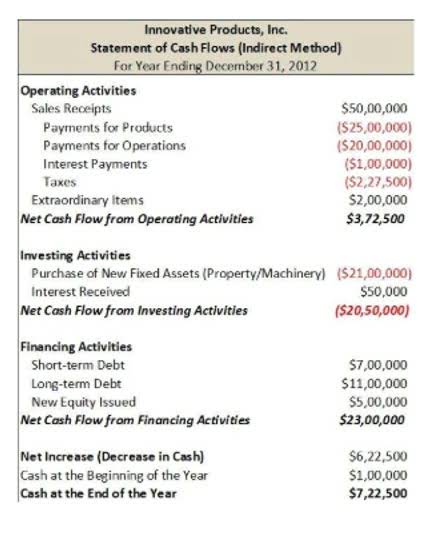When the company accepts the cash, it will record unearned revenue because the company has not yet provided the services to the customer for now. This is against the IFRS 15 of international financial reporting standards. Once a delivery has been completed and your business has finally provided prepaid goods or services to your customer, unearned revenue can be converted into revenue on your balance sheet. Unearned revenue refers to the money small businesses collect from customers for a or service that has not yet been provided. In simple terms, unearned revenue is the prepaid revenue from a customer to a business for goods or services that will be supplied in the future.
How does unearned revenue impact financial statements and balance sheets?
Unearned revenue, also known as unearned income, deferred revenue, or deferred income, represents proceeds already collected but not yet earned. Following the accrual concept of accounting, unearned revenues are considered as liabilities. Unearned revenue is a liability for the recipient of the payment, so the initial entry is a debit to the cash account and a credit to the unearned revenue account. As a company earns the revenue, it reduces the https://tourlib.net/aref_tourism/poluga.htm balance in the unearned revenue account (with a debit) and increases the balance in the revenue account (with a credit). The unearned revenue account is usually classified as a current liability on the balance sheet.
📆 Date: May 3-4, 2025🕛 Time: 8:30-11:30 AM EST📍 Venue: OnlineInstructor: Dheeraj Vaidya, CFA, FRM
- Your business will need to credit one account and debit another account with corresponding amounts, using the double-entry accounting method to do so.
- Automate and configure revenue reports to simplify compliance with IFRS 15 and ASC 606 revenue recognition standards.
- The credit and debit are the same amount, as is standard in double-entry bookkeeping.
- It’s important to note that specific reporting requirements may differ based on the industry and the unique circumstances of each transaction.
- Understanding why customers leave, using data and insights, is the first step to retaining them.
Various adjustments and corrections may also be required as the company continues to provide the goods or services it has received payment for and gradually “earns” the revenue. Accounting for unearned revenue involves specific steps to ensure financial statements accurately reflect obligations and income. When a business receives payment in advance, it debits the cash account and credits the unearned revenue account, representing the liability.
- Many companies need to receive advance payment to get things going first.
- By tracking AR and cash collection, a company can manage its cash flow and ensure that it is collecting payments from customers in a timely manner.
- Initially, the total amount of cash proceeds received is not allowed to be recorded as revenue, despite the cash being in the possession of the company.
- Therefore, unearned revenue takes this concept and does the opposite, paying someone for their services before they complete their job.
- In simple terms, unearned revenue is the prepaid revenue from a customer to a business for goods or services that will be supplied in the future.
- Yes, unearned revenue is considered a liability on a company’s balance sheet.
Examples
These require businesses to record upfront payments as contract liabilities. Companies http://vo.od.ua/rubrics/ehkonomika-i-finansy/18998.php gradually convert these liabilities into recognized revenue as they complete their promised customer obligations. These liabilities amount will be released/derecognized simultaneously with the revenues recognition when the performance obligation is met. At the end of the six months, all unearned revenue has converted into revenue, since all money received accounts for the six mystery boxes that have been paid for. Under the accrual basis, revenues should only be recognized when they are earned, regardless of when the payment is received.
Trust is needed because it is rare for money and goods to exchange hands simultaneously. You can often find yourself receiving money long before you provide agreed-upon services or, conversely, providing services and then waiting for payment. The early receipt of cash flow can be used for any number of activities, such as paying interest on debt and purchasing more inventory. For example, it is a common practice in the construction industry to receive a small proportion of the total contract in advance and then perform most of the work before the final payment is made.
What is Unearned Revenue: Key Insights for Your Business
The initial step in this process is the unearned revenue entry in the books as a cash account debit. The initial journal entry indicates that the company receives cash for credit earned. Deferred revenue includes any revenue that is http://www.trainsim.ru/download/show/id/2102/ not recognized as income because of non-delivery of goods or services. It is never recognized immediately because of contractual obligations or accounting principles. Unearned revenue and deferred revenue are crucial for accurately recognizing revenue. Unearned revenue refers to the advance payment the company receives for offering goods and services.
Service retainers paid in advance
View all your subscriptions together to provide a holistic view of your companies health. CFI is the global institution behind the financial modeling and valuation analyst FMVA® Designation. CFI is on a mission to enable anyone to be a great financial analyst and have a great career path. In order to help you advance your career, CFI has compiled many resources to assist you along the path. Following these rules isn’t just about staying on the right side of the taxation office – it also helps give an accurate picture of how your business is really doing.
What is the difference between unearned revenue and accounts receivable?
According to GAAP, revenue can only be recorded after it has been earned by fulfilling customer obligations. Unearned revenue is recognized as a liability on the company’s balance sheet. It is recorded as a liability because the company has not yet earned the revenue and they owe products or services to a customer. As obligations are fulfilled, the liability decreases, and earned revenue is recognized. For instance, if a consulting firm receives $12,000 upfront for a year-long service contract, it initially records the entire amount as unearned revenue. Each month, the firm recognizes $1,000 as earned revenue by debiting the unearned revenue account and crediting the revenue account.



























